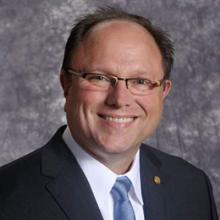More than a third of children enrolled in the Medicaid program aren’t receiving recommended screenings and other preventive care, according to a government audit.
A new report from the Health & Human Services Office of Inspector General found that in 2013 only about 63% of eligible children in the Medicaid program were receiving required screenings under the Early and Periodic Screening, Diagnostic, and Treatment (EPSDT) program. That figure increased from 56% in 2006, but is still significantly below the federal participation goal of 80% in each state annually.
Some children are missing out on well-child visits, while others are not receiving hearing and vision screenings. Even among children who had recommended well-child visits, the exams may not have been complete, according to the report.
For instance, 40% of children had not received the recommended six or more well-child visits by 15 months of age, and 34% had not received one or more visits between ages 3-6 years.
The findings are both surprising and discouraging, said Dr. Stuart Cohen, a San Diego pediatrician and the chairperson of the American Academy of Pediatrics’ California district.
“It raises a red flag,” Dr. Cohen said. “Why aren’t they doing it?”
It’s not because the EPSDT screenings are too onerous, he said, since in many states the schedules are less demanding than what the American Academy of Pediatrics recommends as part of their Bright Futures initiative. And lack of payment isn’t the issue either, he said, because Medicaid payment for EPSDT screenings is higher than Medicaid payments for other pediatric services.
“I think we have to align the incentives and disincentives more closely,” Dr. Cohen said. “Just like we report HEDIS [Healthcare Effectiveness Data and Information Set] measures for the rate of immunizations, Medicaid plans that measure the completeness of a screening and the frequency of screening should be sending more patients to the offices that are high performers.”
Payers also should encourage the greater use of patient reminder and recall modules as part of an electronic health record, Dr. Cohen said.
But there are also drivers of the underutilization of screening that are out of the hands of physicians, said Dr. Michael McManus, a pediatrician at Boston Children’s Hospital and a member of the AAP’s committee on state government affairs. Patients may have difficulty finding transportation to the office, or there may be language barriers that interfere with providing care on the recommended schedule.
These barriers are compounded for small practices working in underserved areas who may not have access to health information technology that allows them to more easily track patients and reach out to them, Dr. McManus said.
This is a vulnerable patient population, and they often have many barriers to care, said Dr. Robert Wergin, a family physician in Milford, Neb., and the president of the American Academy of Family Physicians. “You have to be understanding as a provider and break down the barriers.”
While physicians may not be able to help with issues like lack of transportation, they can make visits more convenient by offering extended hours.
Talking to parents about the importance of preventive screening also can go a long way, Dr. Wergin said. “We get better compliance when we tell them why it’s important.”
mschneider@frontlinemedcom.com
On Twitter @maryellenny



